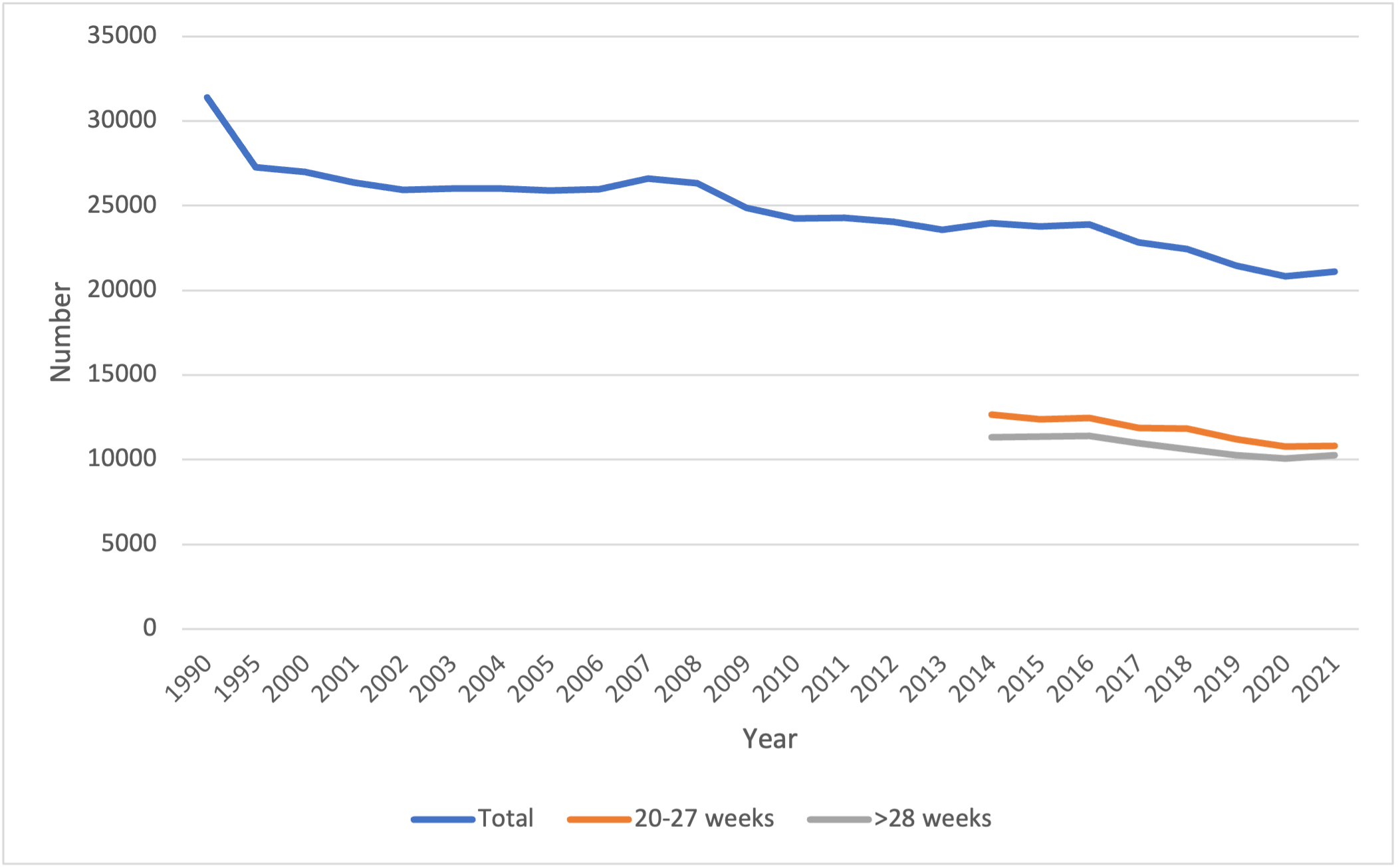The impact of stillbirths on patients and providers
Stillbirths are one of the most tragic situations for obstetrician-gynecologists to encounter, making awareness vital.
The latest United States statistics on stillbirth have been released, reporting an essentially unchanged rate since 2020 for fetal deaths, with 5.7 per 1000 live births and 2.9 per 1000 live births for fetal deaths at 20 to 28 weeks gestation.1 Although essentially unchanged from 2020, the overall trend has declined over the past decade (Figure).1
Stillbirths are one of the most tragic situations we encounter as obstetrician-gynecologists. The emotional toll both for the families and practitioners is immeasurable and results in a unique grief. Unlike deaths that occur later in life, stillbirth results in a lack of shared memories and experiences that can help in the healing process. The absence of tangible moments spent with the baby, combined with societal hesitations to discuss the topic openly, can lead to a sense of isolation and misunderstood pain. Moreover, the psychological toll on parents can be long-lasting and may affect their mental health and relationships for years.
As our patients’ care providers, not only are we entrusted with their medical care and responsible for their physical well-being, but we are also first-line witnesses to the emotional turmoil following a stillbirth. This affects us all, and despite the emotional toll on us as providers, we continue to provide not only medical expertise but also compassionate support.
The impact of stillbirth extends beyond individual families and health care providers. From a public health perspective, the stillbirth rate serves as a crucial indicator of maternal and fetal well-being. Its rate within a country reflects the effectiveness of prenatal care, access to medical resources, and the overall state of maternal health. Addressing stillbirth demands a comprehensive approach that involves not only improving access to medical practices but also wide societal awareness and support systems.
To address the silent epidemic of stillbirth requires a multifaceted approach. Raising awareness is paramount. Open conversations about stillbirth can help shatter the stigma surrounding this topic, fostering a more understanding and empathetic society. Families who have endured stillbirth should find a supportive community that acknowledges their pain and provides resources for healing.
Furthermore, investment in research is essential. Building on the legacy work of the Stillbirth Collaborative Research Network, in-depth studies into the causes and risk factors of stillbirth can potentially lead to preventive measures that save lives. As health care professionals, we can benefit from ongoing training and support to navigate the emotional complexities associated with stillbirth.
These recent stillbirth rates, remaining constant, underline the continued impact of stillbirth on families and providers. By acknowledging its constant presence and committing to increased awareness, support, and research, we can collectively work toward prevention and a more accepting environment for affected families and providers.
Figure. Stillbirths in the United States1

There has been a gradual decline in fetal deaths since 1990. Beginning in 2014, the obstetric estimate of gestation at delivery was used as the standard for measuring gestational age.
Reference
Gregory ECW, Valenzuela CP, Hoyert DL. Fetal mortality: United States, 2021. Natl Vital Stat Rep. 2023;72(8):1-21. doi:10.15620/cdc:129432

